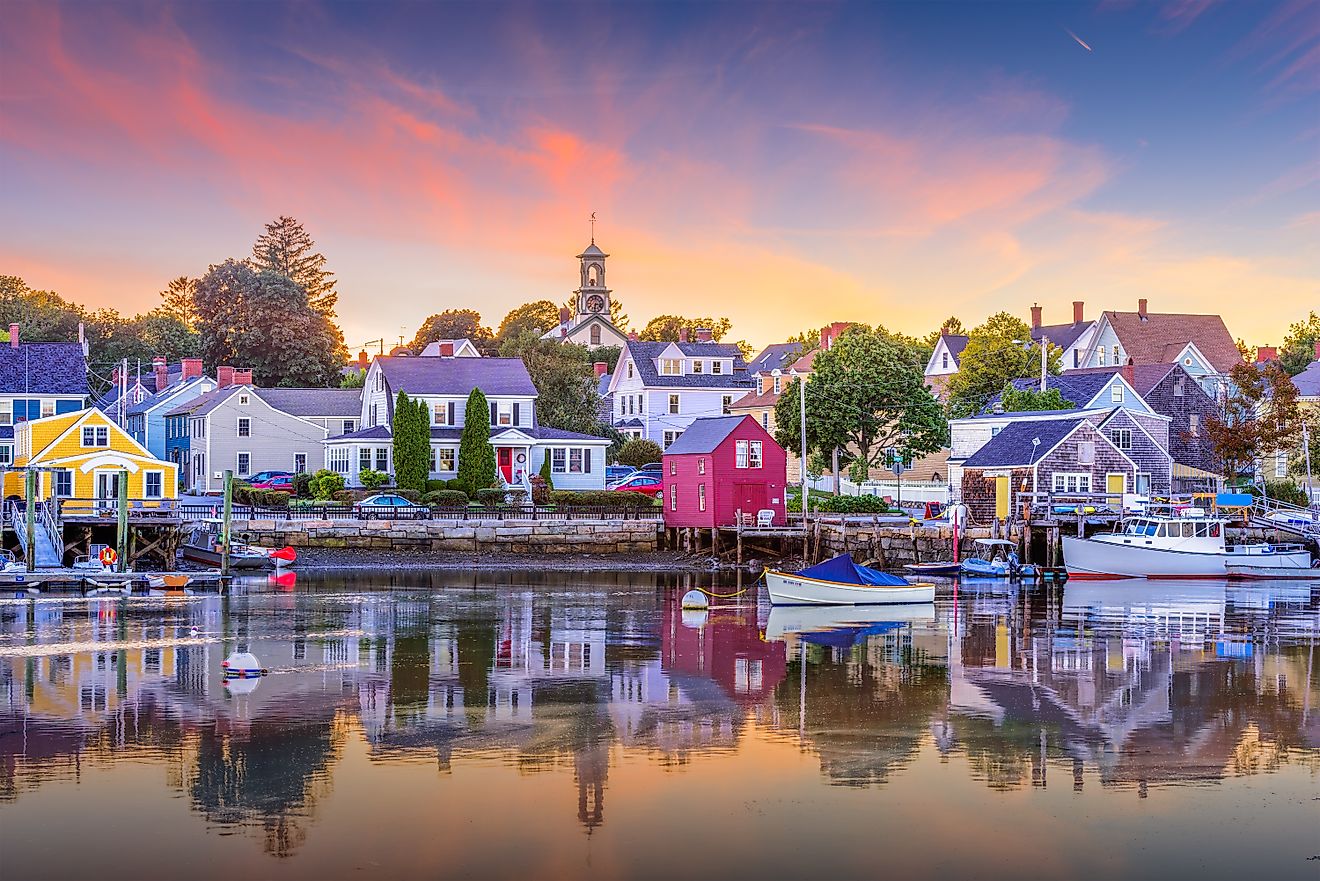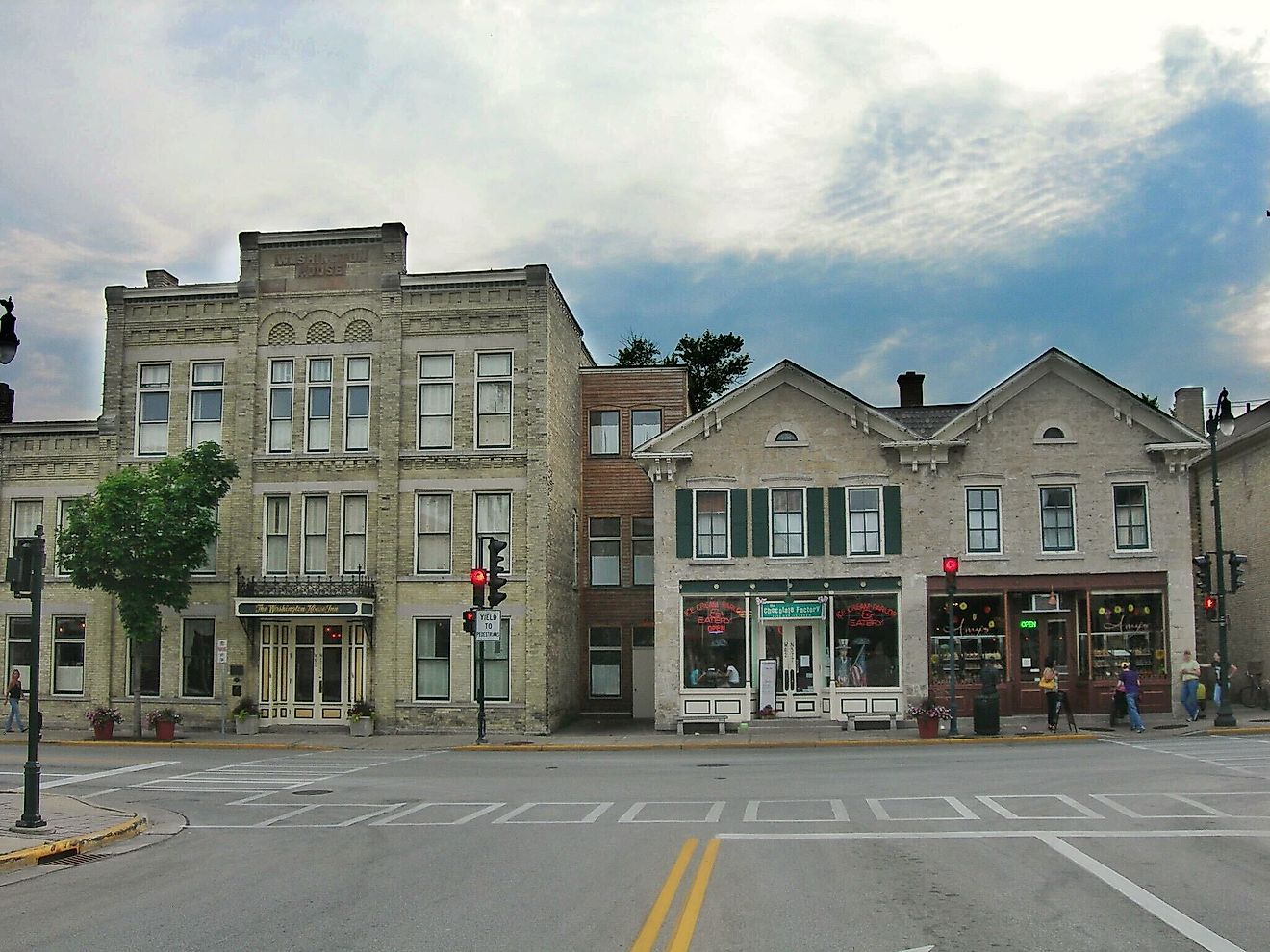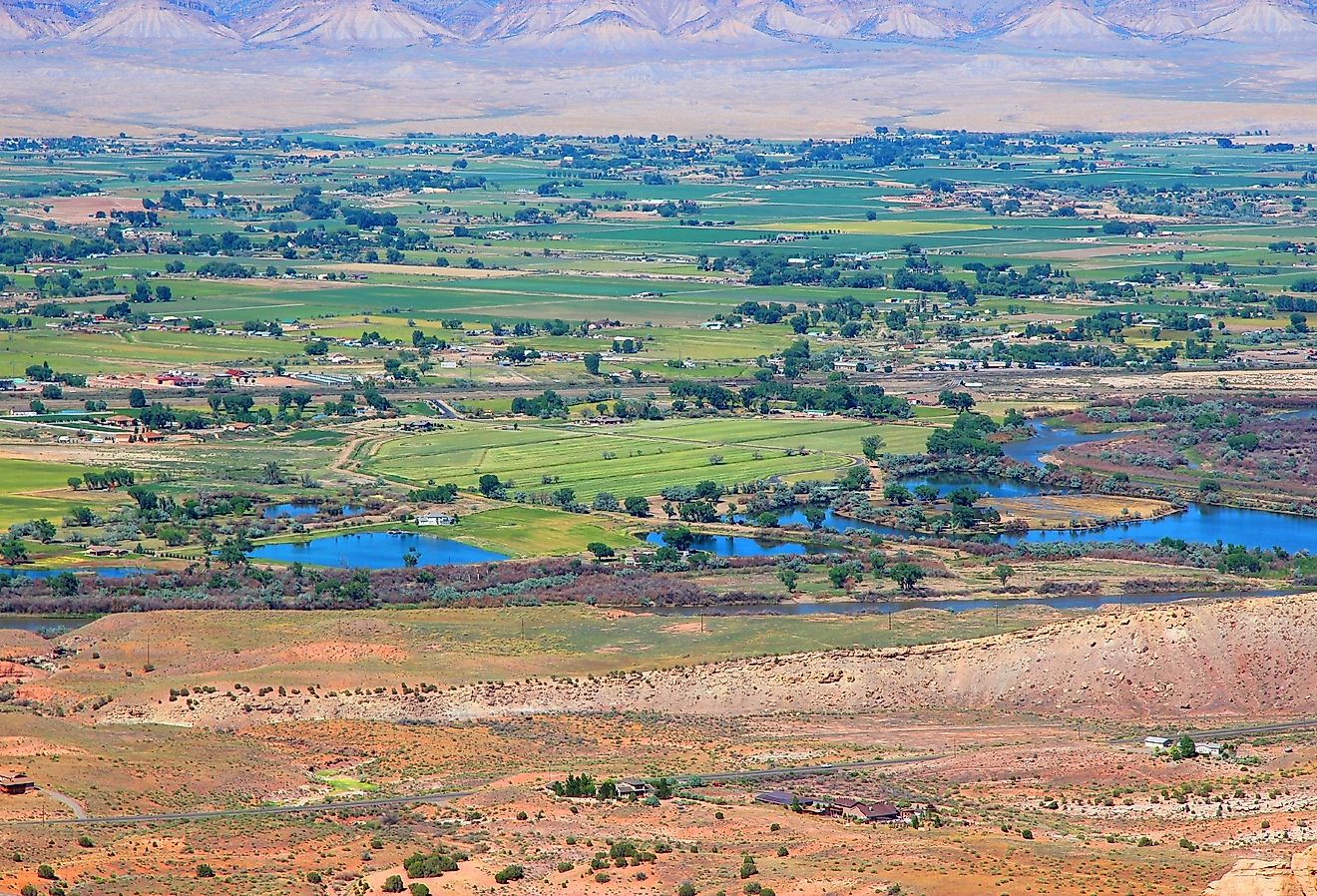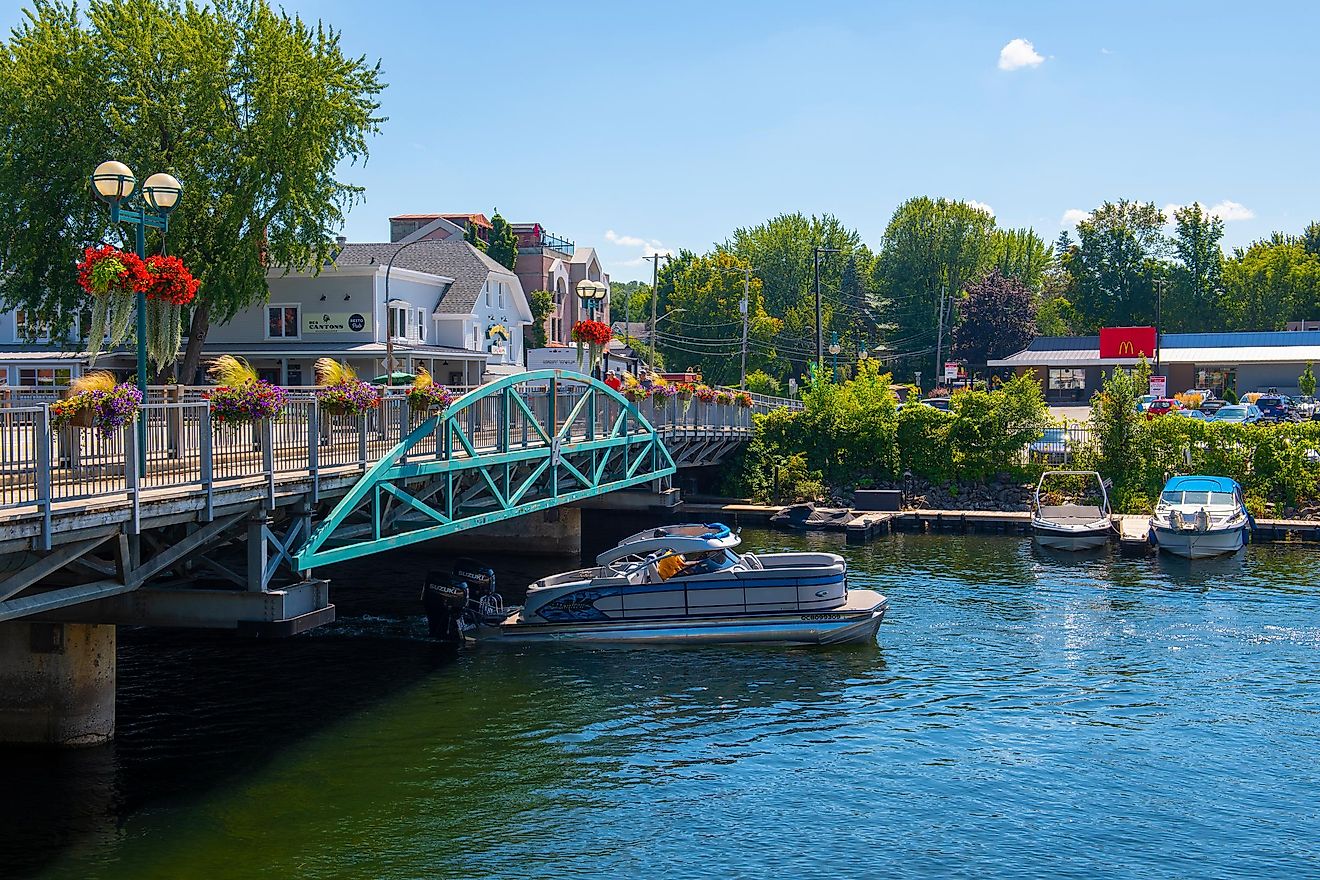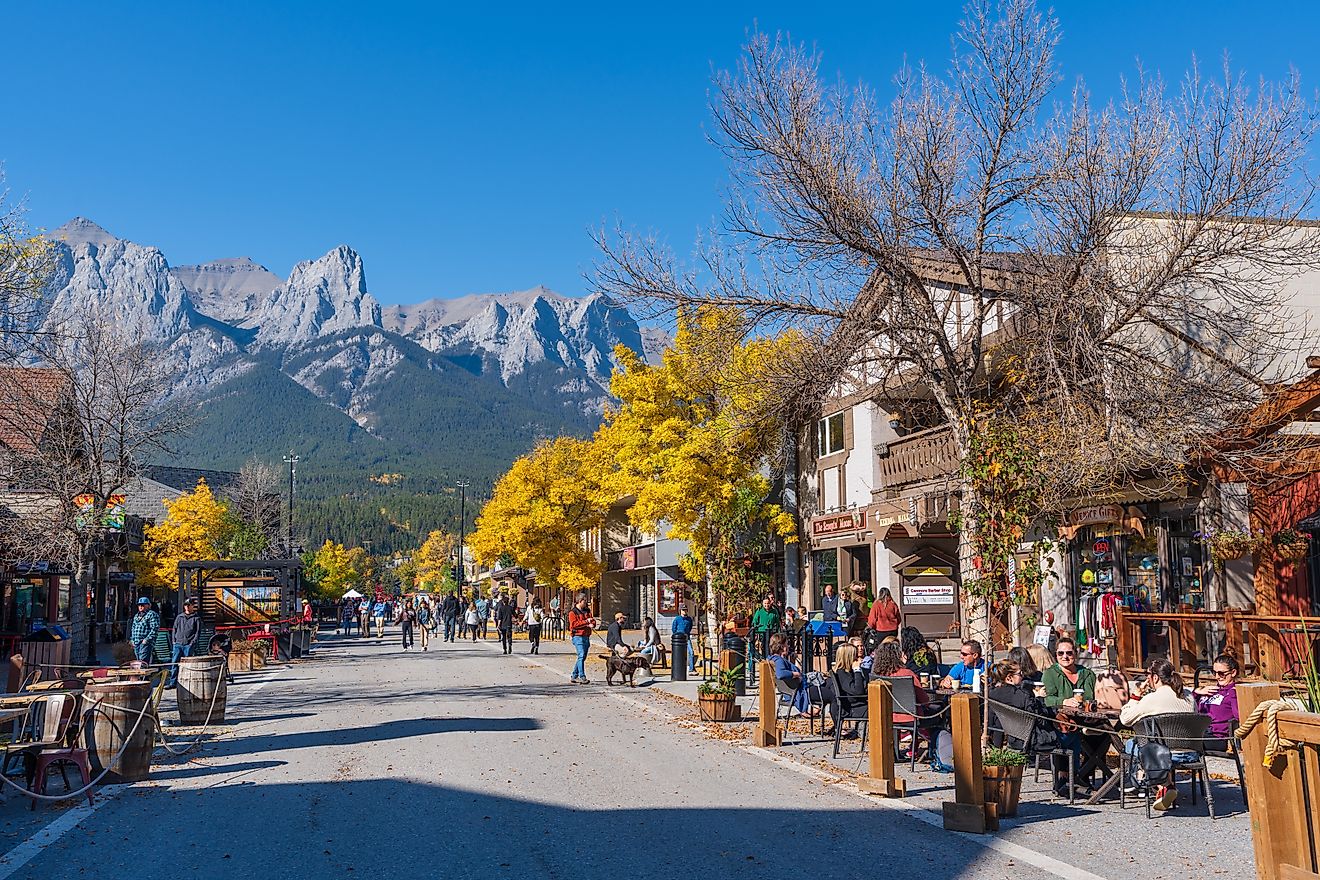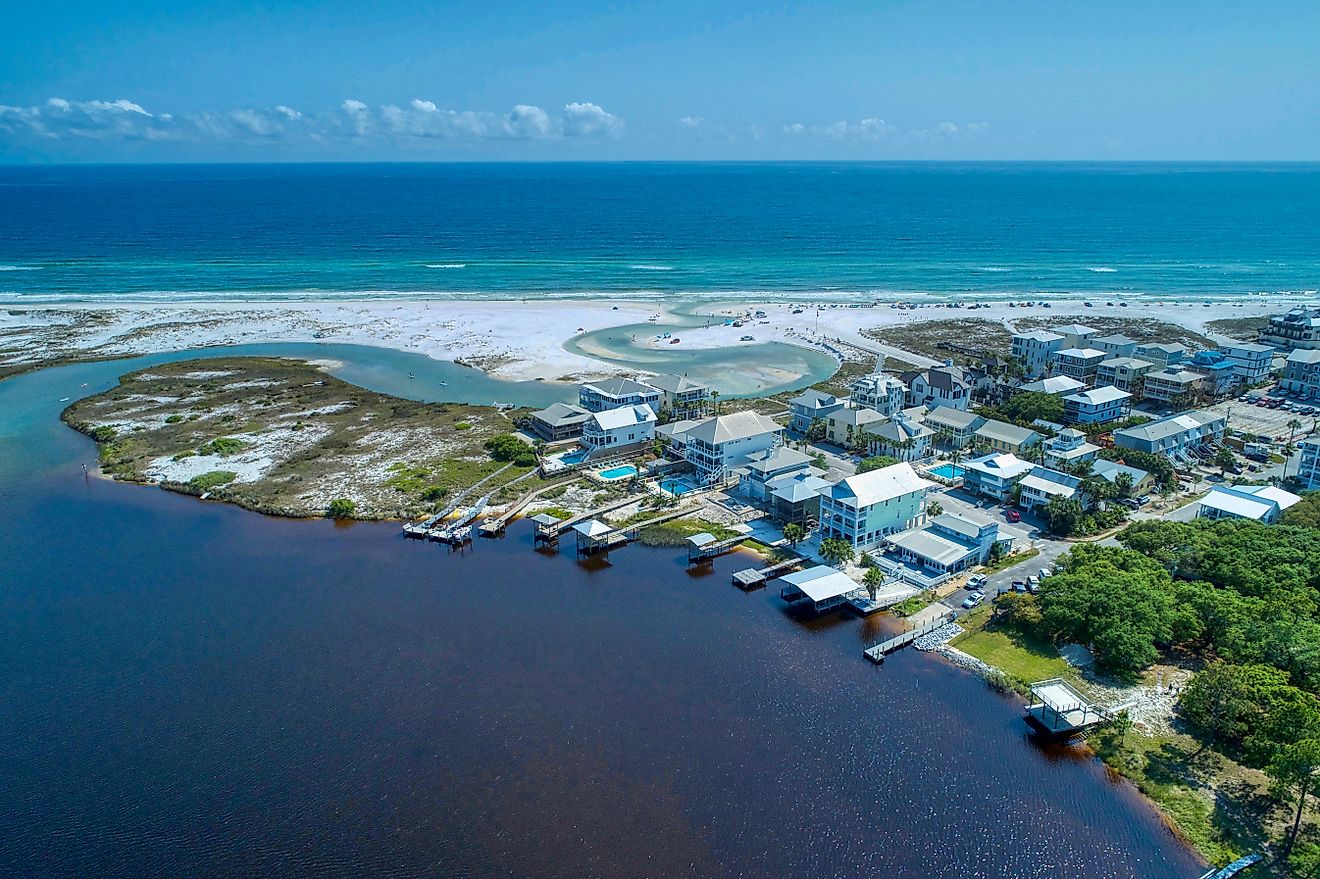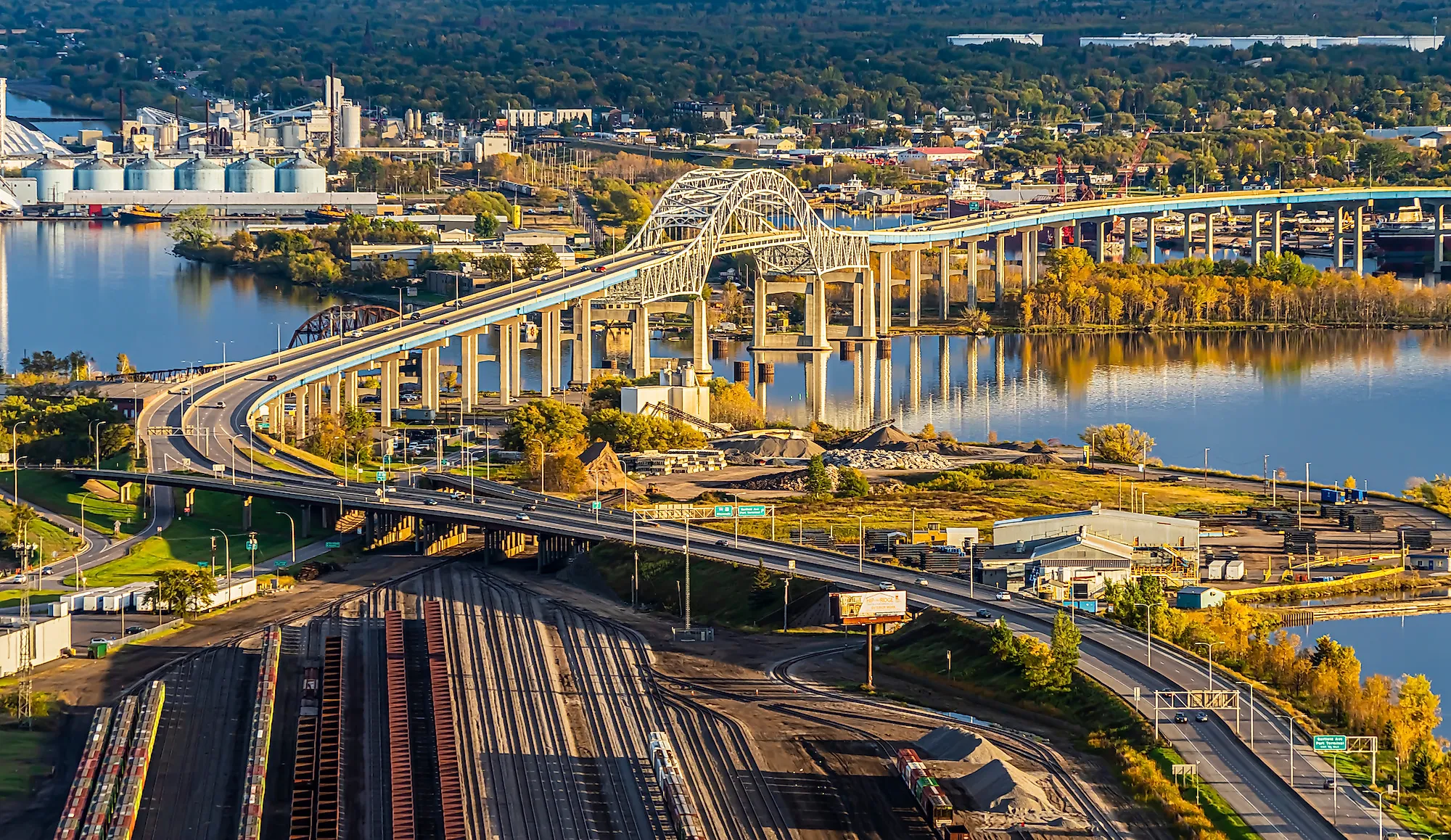
8 Picture-Perfect Main Streets In The Great Lakes
Bordering eight U.S. states and the Canadian Province of Ontario, the Great Lakes form a region where freshwater and community are inseparable. Towns grew along their edges as ports, rail stops, and resort hubs. These are places where ships docked, markets opened, and main streets became the social heart of life by the water. Today, those streets remain vital, lined with storefronts that mirror the region’s past while facing the same wide horizons that shaped it. This list of eight picture-perfect main streets highlights how life along the Great Lakes still flows through the heart of each town, where history, commerce, and community meet at the water’s edge.
Bayfield, Wisconsin

Set on the southern shore of Lake Superior, Bayfield is a compact harbor town whose main street feels directly connected to the water. Centered on Rittenhouse Avenue, the downtown slopes gently toward the marina, where 19th-century brick and clapboard buildings frame views of sailboats and the Apostle Islands beyond. Many now house galleries, cafés, and local outfitters, giving the town a mix of everyday life and lakeside leisure.
From the waterfront, the Madeline Island Ferry Line provides a 20-minute ride to Madeline Island, the only one of the Apostle Islands accessible by car. Apostle Islands Cruises offers narrated excursions that showcase the Raspberry and Devils Island Lighthouses and pass the impressive Devils Island sea caves.
Visitors can spend the afternoon exploring the main drag, where spots like the Bayfield Artists’ Guild showcase regional work, while Bloom allows you to browse local art and gifts or participate in their Pop in & Paint events. End the day with dinner on the outdoor deck of the Pier Plaza Restaurant, overlooking the water. Steeped in history and framed by the horizon, Bayfield’s downtown captures the rhythm of life along Lake Superior.
Cobourg, Ontario
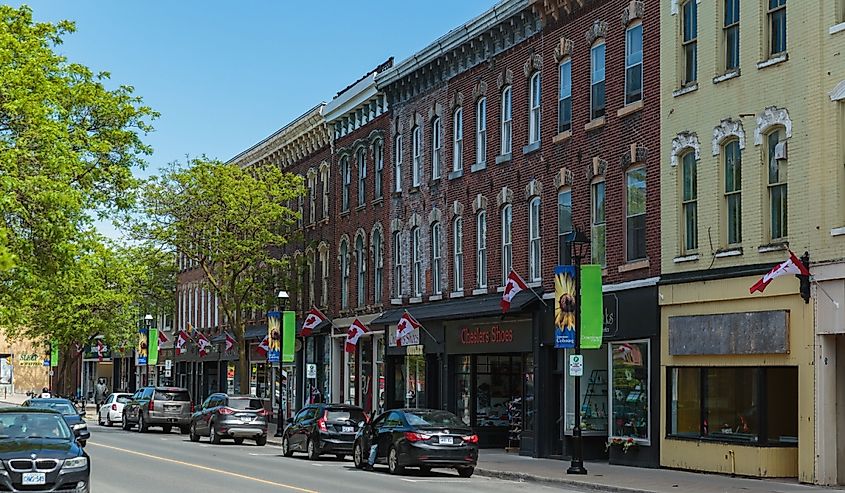
Cobourg sits on the shore of Lake Ontario, where King Street forms the spine of a lively downtown. Restored heritage buildings line the route, filled with cafés, boutiques, and galleries that keep the town’s history in daily view. The street forms part of the town’s Heritage Conservation District, which protects its historic façades and brickwork. At its heart stands Victoria Hall, a civic landmark completed in 1860 that serves as council chambers, a concert hall, and an art gallery. The structure is one of Ontario’s finest examples of mid-Victorian architecture.
A short walk south from King Street leads to Victoria Park Beach, where a boardwalk links downtown to the marina and a wide crescent of sand that fills with locals in summer. The transition from storefronts to shoreline feels seamless; shops give way to patios, then to open lake views. Annual events, such as the Cobourg Waterfront Festival and the Harvest Festival, bring both areas to life with vendors, live music, and art displays. Cobourg’s main street blends the grace of its past with the warmth of a community that continues to gather, celebrate, and grow.
Duluth, Minnesota
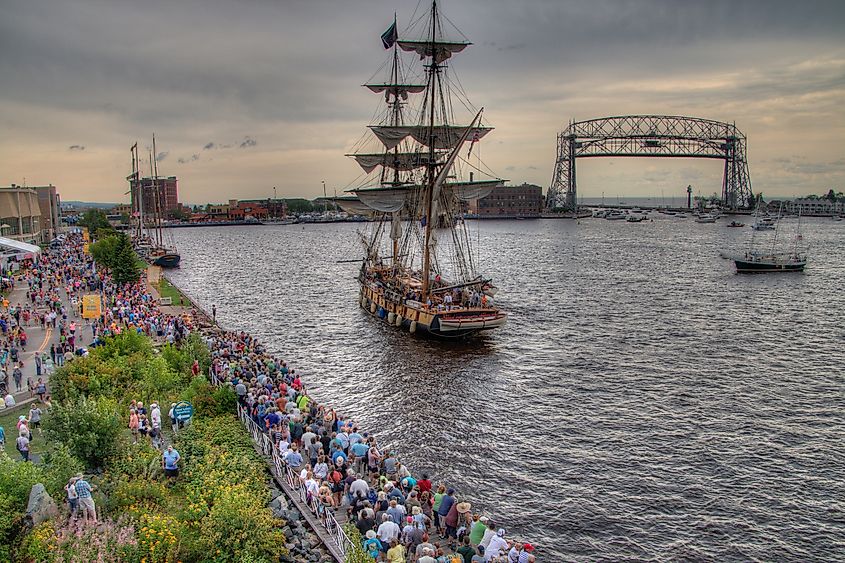
Built into the hillside above Lake Superior, Duluth combines a working port’s grit with the walkability of a waterfront downtown. The heart of downtown Duluth lies along Superior Street, where old brick buildings now hold everything from craft breweries to design studios, standing as a reminder of how the city’s industrial past continues to fuel new ideas. Once the city’s commercial core, the street has been revitalized in recent years with expanded sidewalks, public art, and direct access to the lakefront through Canal Park, a redeveloped warehouse district at its eastern end.
The Aerial Lift Bridge rises above the harbor as Duluth’s most recognized landmark, connecting downtown to Park Point, the long sandspit that stretches seven miles into Lake Superior. Nearby, the Lakewalk Trail runs for nearly eight miles along the water, linking Canal Park to Leif Erikson Park and the rose garden overlooking the lake. Between stops at Fitger’s Brewhouse or the Zeitgeist Restaurant & Bar, visitors can see how Duluth’s downtown manages to balance industrial heritage with creativity and community on the edge of the Great Lakes.
Goderich, Ontario
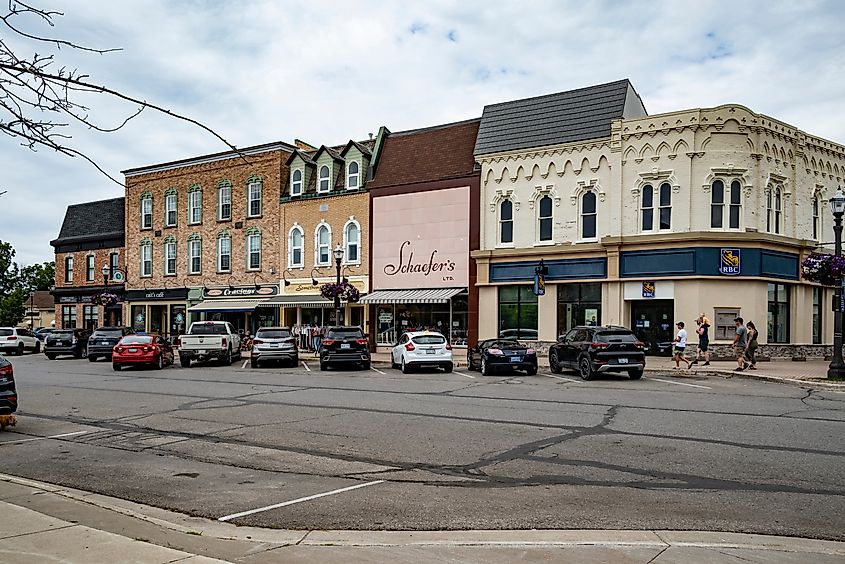
Locals like to say that every road in Goderich leads to Lake Huron—and in a way, they’re right. From a bird’s-eye view, the town’s octagonal Courthouse Square fans out like a compass, most of its eight streets pointing toward Lake Huron’s blue horizon. Built in the 1820s and still unique in Canada, the layout turns downtown into a circular main street. Shops, cafés, and restaurants line the loop around the park at its center, shaded by trees and home to fountains and weekly markets.
Shops and restaurants fill the blocks that ring the square, blending small-town routine with hints of history, from the scent of fresh doughnuts at Culbert’s Bakery, a fixture since 1877, to the coffee and croissants at Cait’s Café, where locals gather just off The Square. Just a few minutes downhill, the Goderich Boardwalk trail follows the waterfront past beaches, lookouts, and the marina, tying the town’s geometry to the lake it was built beside.
Munising, Michigan
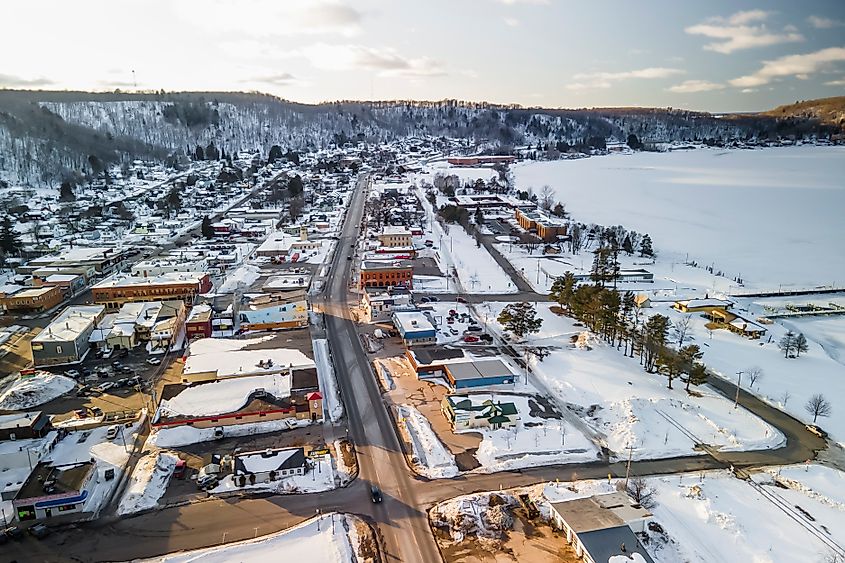
Set between the sandstone cliffs of Lake Superior and the inland waterfalls of Michigan’s Upper Peninsula, Munising balances a rare mix of wilderness and walkability. Downtown unfolds along Superior Street and Munsing Avenue, the main route through town and part of Michigan Highway M-28, where stores line a few compact blocks just inland from the harbor. Everything sits within easy walking distance; you can enjoy a morning coffee while browsing the shelves at Falling Rock Café & Bookstore before heading to the UP-Scale Art Gallery to admire the local works. Make a stop at the Pictured Rocks Interpretive Center, where exhibits trace the area’s maritime history and the formation of the iconic cliffs.
From Superior Street, you can see where the town meets the water. There are docks sprinkled with fishing charters and local anglers, and tour vessels bound for Pictured Rocks National Lakeshore, known for its multicolored cliffs, sea caves, and waterfalls. And then there's Munising Front Range Lighthouse keeping its steady watch over Munising Bay.
Petoskey, Michigan
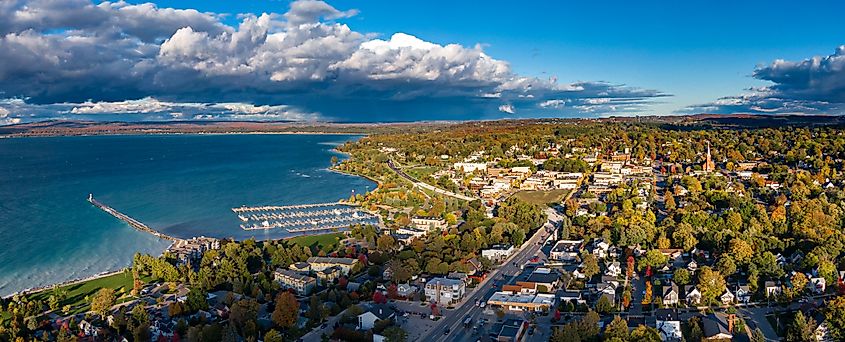
When summer mornings dawn in Petoskey, the town wakes gently. Cyclists glide along the Little Traverse Wheelway in Bayfront Park, shopkeepers lift their shutters to greet the day, and sunlight dances on the bay below. History here feels lived-in rather than preserved, with brick storefronts merging old-town character with new energy, inviting you to pause and take it all in.
Downtown’s famed “Gaslight District” takes its name from the green decorative lampposts that have lined the streets since the 1960s: while they no longer burn gas, their silhouette remains a signature of the shopping corridor. Built on a hillside, Mitchell Street, the town's thoroughfare, seems to lead the eye straight to the shimmering Little Traverse Bay, an inlet of Lake Michigan.
Just off the main drag sits the Perry Hotel, built in 1899 and still in operation as the only one of Petoskey’s original luxury resort hotels from that era. It’s perched above the city with magnificent bay views and anchors the town’s resort-town legacy. The nearby Bear River Valley Recreation Area features a 1.5-mile path along the Bear River, offering boardwalks, paved and unpaved trails, and lookouts that keep even seasoned nature enthusiasts returning.
Sackets Harbor, New York
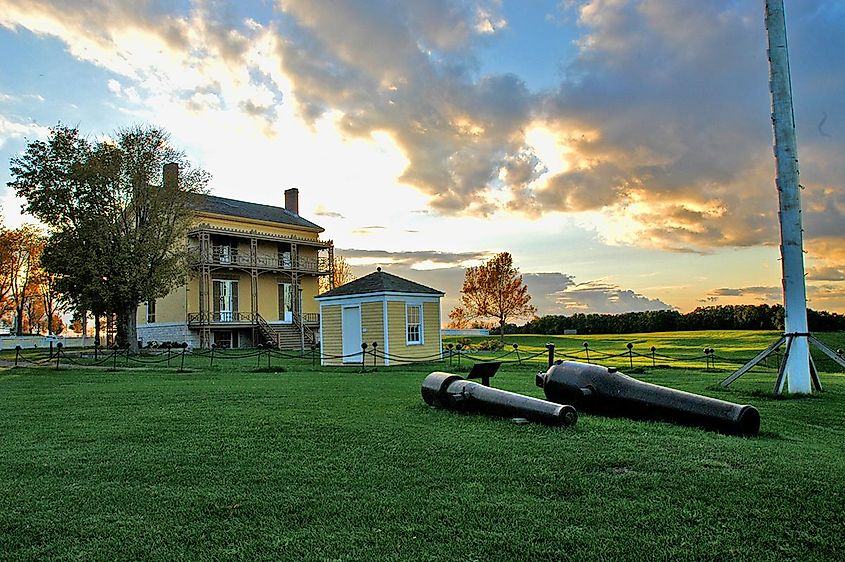
On the eastern shore of Lake Ontario, Sackets Harbor grew from a naval outpost into one of upstate New York’s most scenic waterfront villages. West Main Street runs just inland from the water’s edge; its brick and limestone buildings were once home to barracks, blacksmith shops, and trading houses. Now, those spaces welcome visitors to local favorites like Good Fellos, a cozy Italian wine bar and restaurant, and Chrissy Beanz Bakery & Café, where the delectable scent of coffee and pastries drifts onto the street.
At the end of West Main lies Navy Point; once the site of a U.S. Navy shipyard during the War of 1812, and today home to a modern marina. Nearby, the Sackets Harbor Battlefield State Historic Site preserves part of the original harbor defenses, with walking paths and lakefront viewpoints that bring the town’s military past into focus. From these overlooks, visitors can see Horse Island, where a red-brick lighthouse has marked the harbor entrance since 1870. From this vantage, sails and history share the same horizon.
Vermilion, Ohio

Morning light hits the water first in Vermilion, glinting off masts and the white tower of the Vermilion Lighthouse before it reaches the storefronts a few blocks inland. Locals call this area “Harbour Town,” a compact downtown where Main Street meets Liberty Avenue and the rhythm of the lake lingers in every breeze.
Main Street feels made for wandering: family-run shops border the sidewalks, framed by benches and planters that overflow with flowers throughout the summer. Step into Brummer’s Chocolates, a community staple since 1904, or SOS Wines, a boutique wine shop and tasting bar. Nearby, Big Ed's Soda Grill is a retro diner serving up classic sundaes and eats, while Chez François brings fine dining to the riverfront. At the north end of the street, Main Street Beach and the lighthouse mark where downtown meets Lake Erie.
Vermilion’s Harbour Town is part of the Main Street America program, which celebrates communities that preserve their historic character while keeping downtown life vibrant. You can see that balance here—in the restored storefronts, walkable streets, and the sense of care that makes this lakeside main street as welcoming as the view beyond it.
The Heart Still Faces the Water
Main streets around the Great Lakes share more than a view—they share intent. Each was built to face the water, serving those who arrived by ship, rail, or road, and keeping the shoreline close to daily life. Time has changed what fills the shop windows, but not what they represent: communities that value walkable spaces, support small businesses, and foster a sense of continuity that outlasts a single season. Standing on any of these streets, with the lake just down the hill or beyond the docks, you can still feel the pull that shaped them as a quiet reminder of how deeply water defines place.


